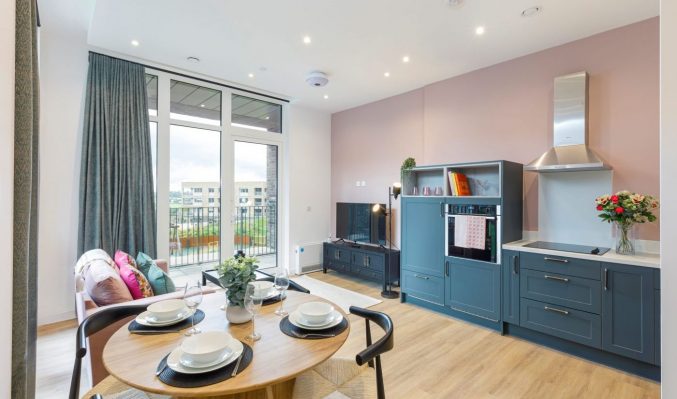Empty office space; an opportunity?
By Sophia Lee

Late 2021 saw the biggest rise in vacant shops in Britain for over two decades and the sharpest increase in empty office spaces since the financial crisis, highlighting how COVID reshaped the economy.
The Royal Institute of Chartered Surveyors (RICS) said its quarterly commercial property survey for the end of 2021 showed a swing in demand towards industrial space – such as warehouses to service booming online shopping, moving away from traditional retail and offices.
Although there was a large increase following COVID in 2022, it’s forecast that office-based employment will fall again in 2023 c.1% according to CBRE as a result of falling employment numbers.
Take-up across the UK office markets in 2023 is expected to see a decline of 7%, and according to Lambert Smith Hampton (LSH) around three-quarters of businesses in the south-east of England are already seeking to reduce their office space, with over a quarter planning to reduce it by 40 per cent or more.
Based on this, LSH said that up to 26 million square feet of office space, equivalent to twice the entire office stock of Reading, could be “rendered surplus to demand over the next decade” in the south-east alone.
So it begs the question, “What to do with all of this space?”
Well, back in 2021 to combat these negative effects, then PM Boris Johnson announced major reforms to the planning system, with a particular focus on converting existing sites.
The enhancement of the existing Permitted Development Rights was hoped to kick start the construction industry and speed up recovery through the creation of new homes from regeneration of vacant and redundant buildings left lifeless from the pandemic.
Nevertheless, Britain today still has a backlog of 4.3 million homes that are missing from the national housing market.
The current housing deficit would take at least half a century to fill even if the Government’s current target to build 300,000 homes a year is reached.
Could the increased amount in vacant commercial office space be the answer?
RICS recently reported that in London, one and two bedroom flats account for 49% of demand, 7% up from a year ago.
By comparison, demand for three bed houses has fallen to 39% from 44% across the UK. Zoopla similarly report that more than a quarter of conscious buyers are now looking for one and two bedroom flats, which is up 5% from the previous year.
Even outside of the sales market 62% of landlords are experiencing increased demand for rental properties says a new 2023 landlord report.
The number of households privately renting has more than doubled over the past two decades, according to the 2021 consensus, to 5 million.
The UK is experiencing a shortage of rental stock, with landlords unable to meet the increased demand, leaving renters struggling to find a suitable property which caters to their requirement of a smaller apartment.
With the appetite for smaller one to two-bedroom flats there, SME developers are presented with a potential chance to shrink the gap between vacant office space and the residential housing backlog.
In tandem, we as lenders should provide a solution that suitably supports developers who venture down this path, whether that be for a lighter refurb through to a heavier conversion if deemed necessary.
Adopting a policy of flexibility throughout is essential, to enable developers to make the most out of the opportunity provided.
After all, we as lenders don’t succeed if our borrowers don’t so it’s up to us to provide the best tools available to get them there.

Sophia Lee joined Avamore Capital in June 2021 as its first Internal Relationship Manager. She is primarily focused on developing partnerships, driving brand awareness and ensuring wide market reach on behalf of Avamore Capital. In her role, Sophia gains varied insights and feedback from the industry so is well placed to comment on the landscape of bridging and development.










You must be logged in to post a comment.